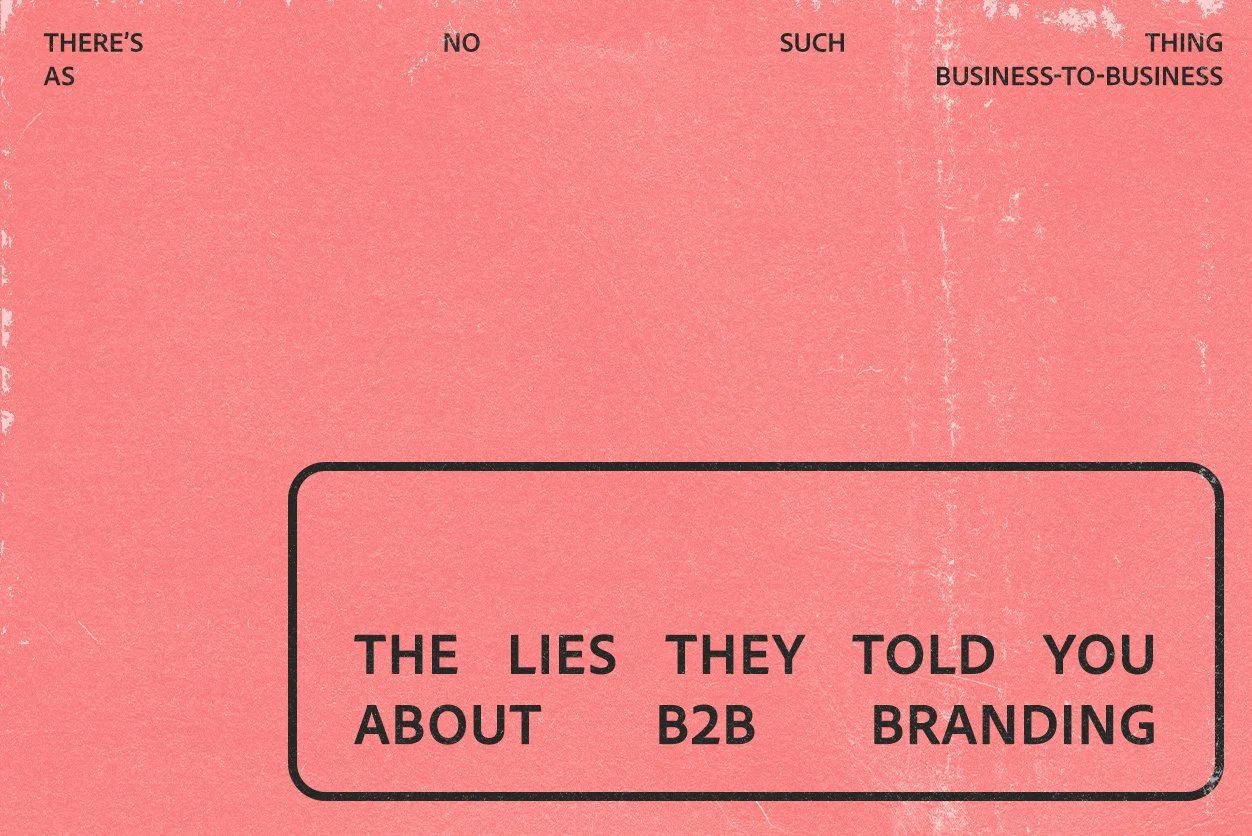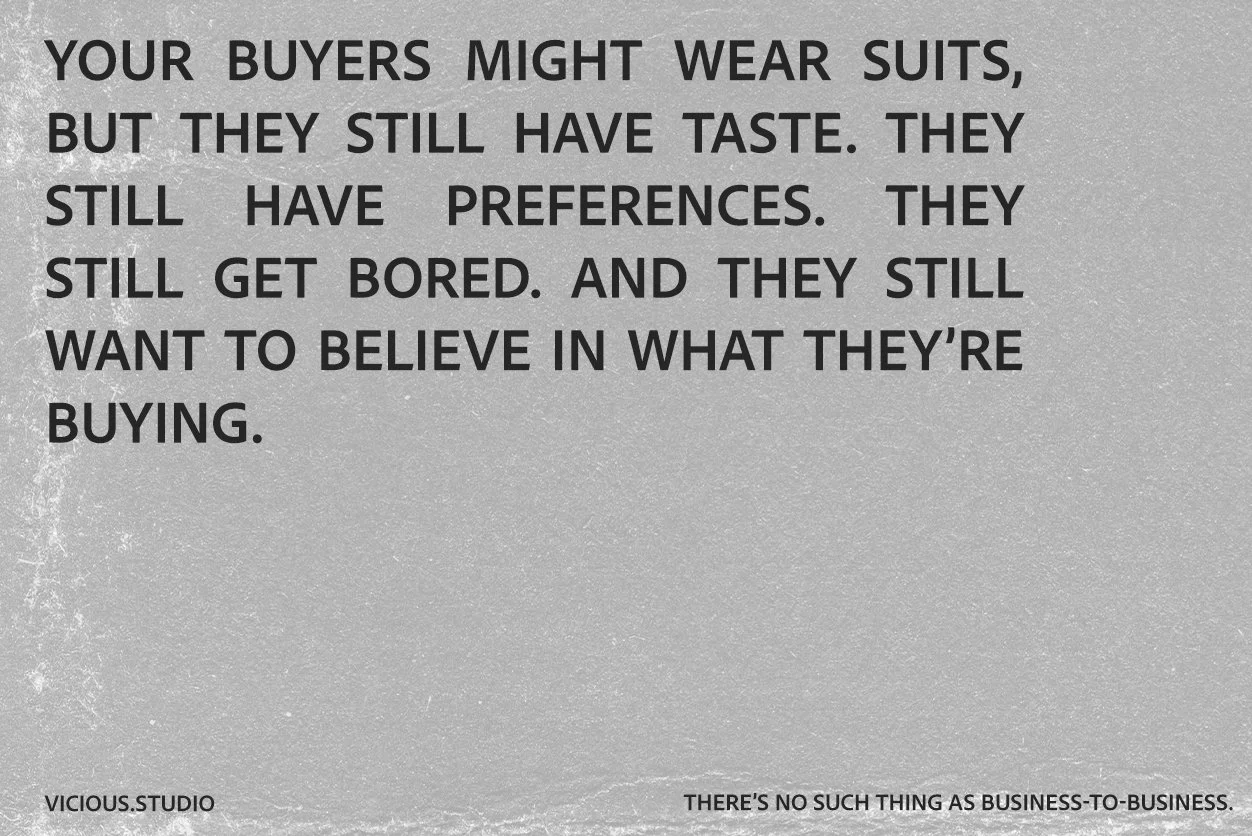The Lies they told you about B2B Branding
There’s No Such Thing as Business-to-Business.
Let’s just say it: we hate the term “B2B.” I hate the way it’s used. Hate what it implies. Hate what it excuses.
“Business to Business” sounds like strategy. Sounds like enterprise. Sounds like you’re in the game. But zoom in even a little and it falls apart. Because a business doesn’t buy from another business.
People do.
There’s No Such Thing as Business-to-Business.
Real, living, stressed-out, curious, skeptical, goal-chasing people. The ones reading your pitch. Clicking through your website. Sitting through your onboarding flow. Every single “B2B” interaction is, and always has been, human-to-human.
But we’ve built a whole language to pretend otherwise. B2B branding has become a permission slip to be boring. To avoid emotion. To sidestep storytelling. You see it everywhere: grayscale logos, robotic copy, slogans that sound like they were written by an AI that only ingested white papers. “Transforming future-ready solutions.” What does that even mean? And more importantly—who is that for?
This isn’t about making things fluffy. We’re not advocating for cute slogans and splashy websites that ignore the complexity of your product. B2B brands often do need to go deep. They have to speak to procurement teams, IT departments, technical buyers, compliance officers, you name it. But depth and dryness are not the same thing. Being serious doesn’t mean you have to be soulless.
We’ve worked with enough clients across “B2B” categories—SaaS, logistics, healthcare, manufacturing—to see the pattern clearly. The ones who win? They don’t hide behind the B2B label. They dig deeper. They get clear on what makes them different. They tell real stories about why they exist and who they’re for. They show humanity, because humanity builds trust. And trust is what every business—every person—actually buys.
One of the most common fears in B2B branding is “sounding unprofessional.” It’s baked into the briefs. As if speaking like a person is unprofessional. As if your product will collapse if your homepage has a point of view. But this fear leads to sameness. And sameness is the fastest way to be forgotten.
Your buyers might wear suits, but they still have taste. They still have preferences. They still get bored. And they still want to believe in what they’re buying. They want to know your company is made of people who give a damn. Not bots. Not buzzwords. Not 12-point Times New Roman on a page titled “Why Us.”
When we hear a brand say, “Well, we’re B2B,” what they usually mean is, “We don’t want to take a risk.” But not taking a risk is the biggest risk. Because in a market full of safe choices, the only thing that cuts through is a brand that sounds—and feels—like it knows who it is.
So call it what you want. Enterprise. Infrastructure. Industry. But don’t hide behind the acronym. B2B isn’t a brand strategy. It’s not even a useful distinction anymore. Because behind every business is a buyer. Behind every buyer is a brain. And behind that brain is a heart.
Speak to that. Build for that. Design for that. Everything else is just static.


